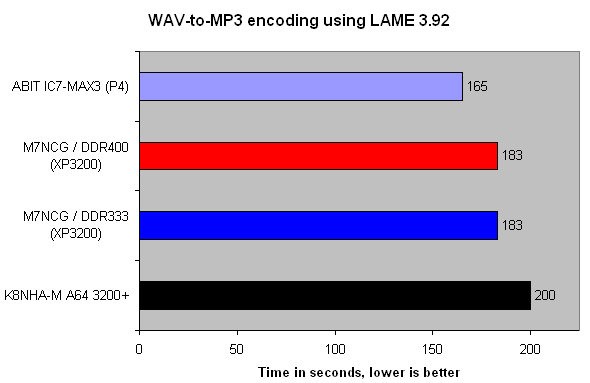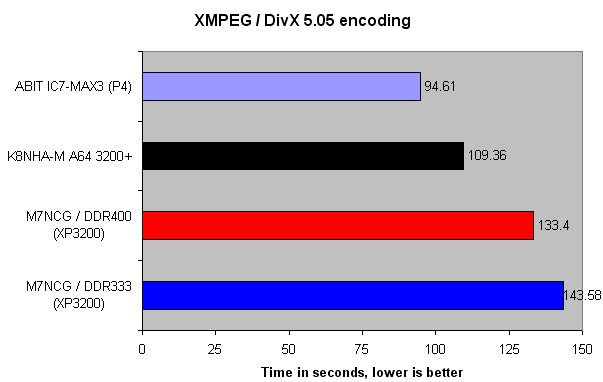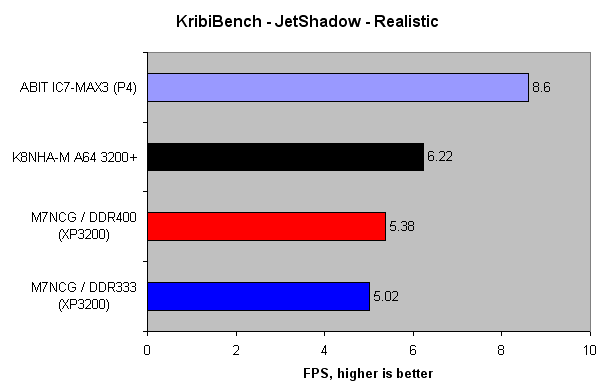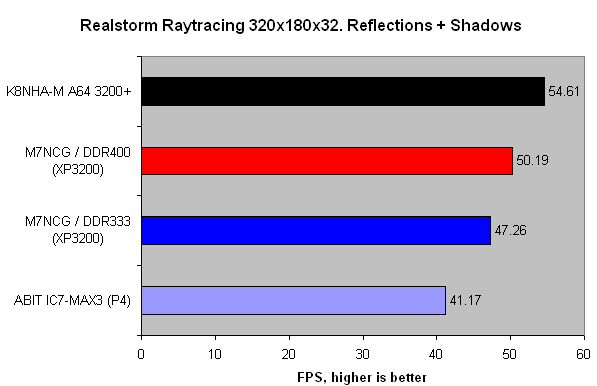DivX, LAME, Raytracing, KribiBench
MP3 encoding is largely unaffected by memory performance. The CPU's computational units are put to stressed use.
The most efficient on-chip memory controller in the world isn't going to help much in this test. It just goes to show that not every activity is memory intensive. The GHz speed hierarchy is dominant here. 3.2GHz > 2.2GHz > 2.0GHz. The test was to encode 611MB of WAV files into 192kb/s MP3 format.

The test here was to encode the first VOB of American History X using a bitrate of 1000kb/s. Benchmark mode was limited to the first 5,000 frames and no sound was encoded. DivX Pro 5.05 was used. Black borders were cropped too. P4's realm here. It's still a memory-intensive task, with the mATX nF2 board taking 10 seconds longer to complete the task in the official DC DDR333 mode.

KribiBench is an easy-to-use benchmark from Adept Development. It's a software (read subsystem) renderer that's capable of rendering amazingly complex scenes. The benchmark can be downloaded from here and features models with 16.7 billion polygons.. The test is the rather easier JetShadow model with the realistic setting. The P4 leads the way, but the nForce3 150, powered by the Athlon 64 3200+, shows decent, meaningful gains over the XP3200 Barton.

The boot is on the other foot with Realstorm's Raytracing benchmark. The AMD CPUs dominate. Again, there's a statistically significant difference between the performance exhibited by the nForce2 Biostar board run in either DC DDR400 or DDR333.









